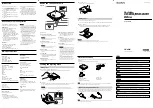
Sutron Corporation X-Link Operations & Maintenance Manual, Rev 1.63 5/24/2016 pg. 64
6.
Alarms
Alarms are used to send immediate notifications when sensor readings read a
certain threshold. They can also be used to control an output (page 120.)
When a measurement is made, if alarms are enabled for that measurement, the
sensor reading is compared to the
Alarm Threshold
and
Alarm Deadband
. If
certain criteria are met, the alarm triggers (see below).
When a sensor reading reaches a certain threshold, the station is said to
go
into alarm.
While that sensor reading stays above the threshold, the system is
considered to be
in alarm.
After the sensor reading drops below the threshold, the system
goes out of
alarm
.
When the station is in alarm, it is noted in the station's status.
When a station goes into or out of alarms, the reading causing the alarm is
logged. Additionally, an event is recorded in the log.
X-Link can be set up to send transmissions when it goes into alarm. Alternatively,
X-Link can be set up to make a transmission when it goes into alarm
and
to make
another transmission when it goes out of alarm.
X-Link can control its digital output based on alarm conditions. See the Output
section for details.
Most sensor readings cause alarms at the time the measurement is scheduled. If
a temperature sensor is set up for alarms with a
Measurement Interval
of 15
minutes, the station will read the sensor every 15 minutes and decide whether
to go into alarms.
Some sensors, including the tipping bucket and sensors setup as digital counter
and level, can cause instant alarms. When the tipping bucket tips, X-Link is
immediately notified. If the tip causes an alarm condition, the station goes into
alarms right away, even if it was not time to make a measurement.
Each measurement may be set up with up to three different alarms. This way, it
is possible to get an alarm when the stage reaches 3 feet, another alarm when it
reaches 4 feet, and a third alarm when it reaches 6 feet.
If more than three alarms are needed for one sensor, set up two measurements
to read the same sensor, but give them different alarm conditions.
















































